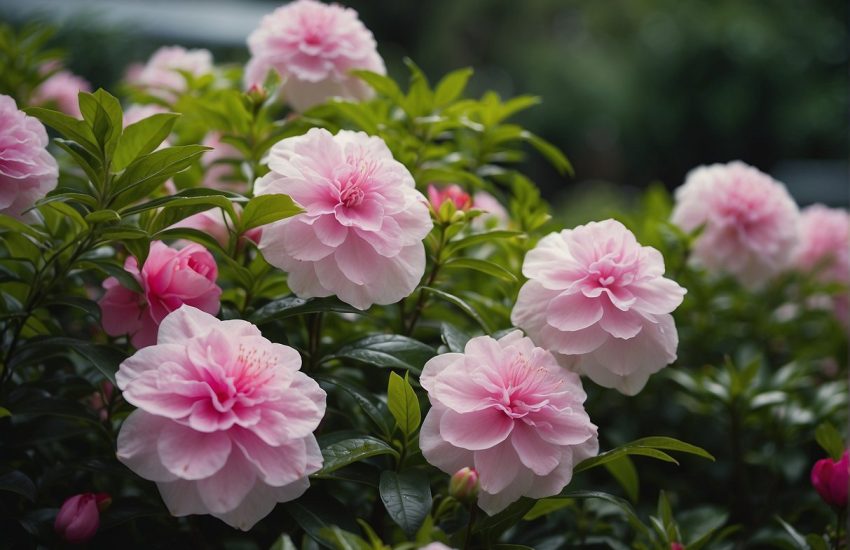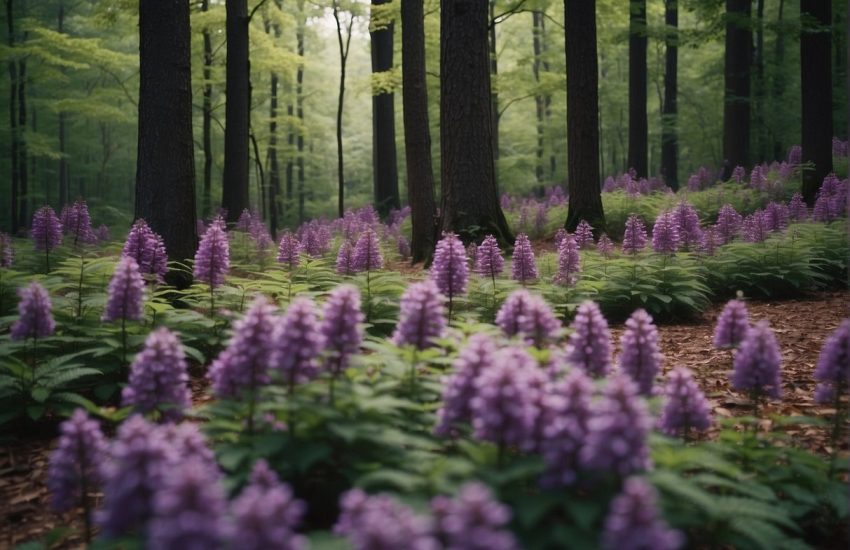Native Prairie Dropseed for Nebraska: Ideal Grass for Sustainable Landscaping
Native prairie dropseed is a grass that really belongs in Nebraska’s landscapes. It handles different soils with ease and brings some real benefits to local ecosystems.
Its adaptability and graceful look seem to make it a favorite for restoring native prairies and adding interest to gardens.
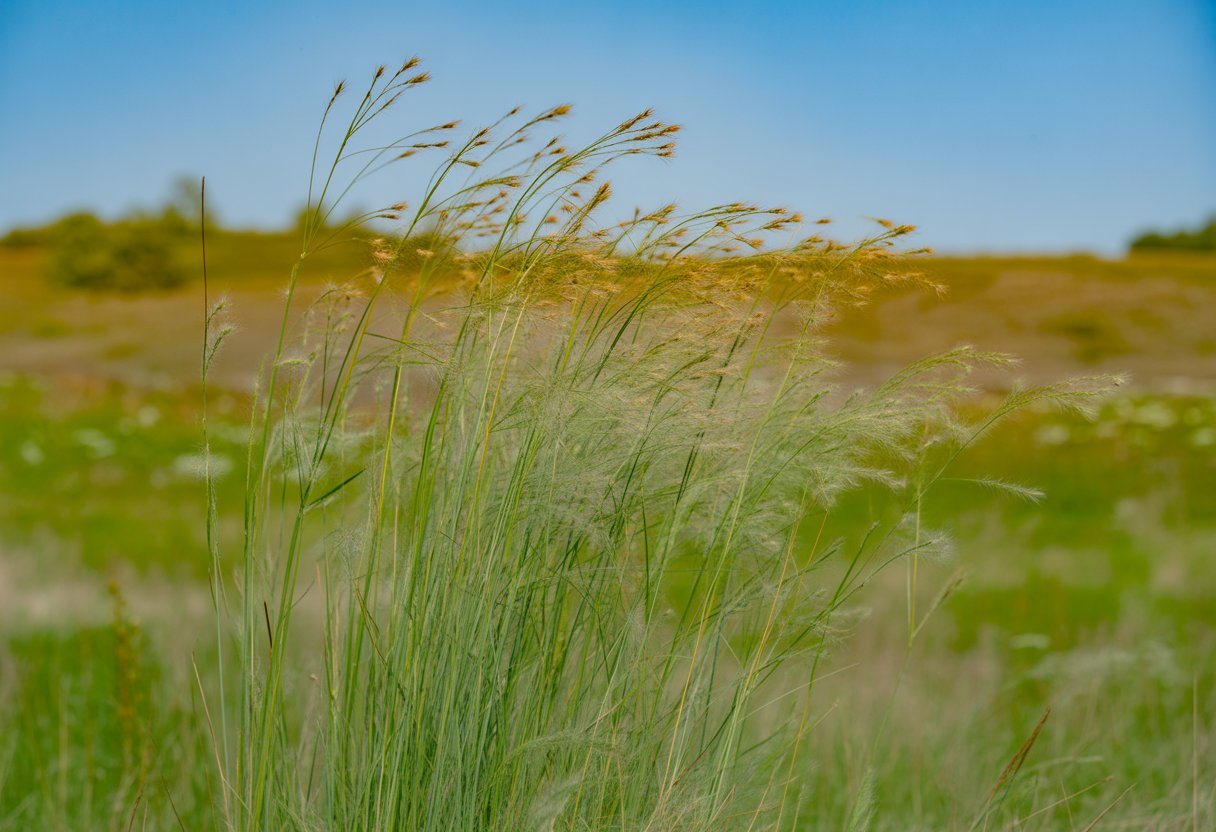
This grass has a fine texture and arching seedheads, which look nice and offer shelter for wildlife. It shrugs off drought and doesn’t ask for much care, so it fits Nebraska’s climate and soils just right.
Gardeners and land managers in Nebraska use prairie dropseed to support biodiversity and build tough, low-maintenance landscapes. Knowing how it grows helps folks get the most out of it, whether they’re restoring prairie or just adding some flair to a yard.
Overview of Native Prairie Dropseed in Nebraska
Prairie dropseed stands out as a native grass with a knack for adapting and looking good. It’s especially at home in certain Nebraska eco-regions and has a few unique features that make it easy to spot and important for grassland habitats.
Taxonomy and Botanical Description
Prairie dropseed belongs to the Poaceae family and goes by the scientific name Sporobolus heterolepis. It’s a warm-season perennial bunchgrass that usually grows about 1 to 3 feet tall.
The plant forms dense tufts of fine, arching leaves that feel smooth to the touch. Flowering stems carry loose, airy panicles filled with tiny spikelets.
These spikelets drop small, rounded seeds—hence the name. Its deep roots help it survive drought and hold soil together in native prairies.
Common Names and Plant Identification
People call Sporobolus heterolepis prairie dropseed or dropseed grass. You’ll notice its slender leaves, just 1 to 3 millimeters wide, and those feathery seed heads that show up in late summer.
The seed heads look like delicate, loose clusters, almost feathery. Prairie dropseed’s leaves sometimes curl a bit, and the color shifts from green to blue-green.
It’s easy to pick out among other native grasses thanks to its graceful shape and the relatively tiny seeds.
Distribution and Physiographic Regions
Prairie dropseed calls the central United States home, and Nebraska sits at the heart of its range. You’ll mostly see it in the state’s tallgrass and mixed-grass prairies.
Within Nebraska, it pops up most in the Central Great Plains and parts of the Dissected Till Plains. It prefers well-drained soils—loams or sandy spots—and manages both dry and moderately moist conditions.
Ecological Significance and Habitat
Native prairie dropseed plays a key role in Nebraska’s grasslands, adding to biodiversity and helping keep ecosystems steady. It grows in all sorts of soil types and plant communities, shaping the landscape and giving native species a boost.
Ecosystems and Plant Communities
Prairie dropseed often shows up in mesic prairies and mature plant communities. It’s a part of several Kuchler plant associations and SAF cover types, showing just how important it is in stable grasslands.
It lives alongside other native grasses like little bluestem and switchgrass. Its presence usually means you’re looking at a high-quality prairie with a solid mix of species.
This grass adds structure and complexity, making room for native plants and wildlife. It handles fire and grazing well, which helps keep prairie plant communities healthy and resilient.
Growth Habit and Ecological Characteristics
Prairie dropseed grows in tight bunches with fine leaves, helping prevent soil erosion and creating small habitats for insects and critters. Its deep roots improve soil structure and keep nutrients moving.
While it’s drought-tolerant, it does best with moderate moisture—pretty typical for mesic prairies. The seed heads attract wildlife and help build a diverse seed bank.
Its slow but steady growth makes it a long-term stabilizer for prairies, so it’s a go-to for restoration projects.
Habitat Types and Soil Preferences
Prairie dropseed adapts to different soil types but really prefers well-drained, loamy or sandy soils. It’s common in grasslands with neutral to slightly acidic pH and some organic matter.
You’ll find it in upland prairies and open woodlands, usually where there’s decent sunlight. It doesn’t like heavy clay or compacted soils, but as long as water drains away, it’ll stick around.
When you see prairie dropseed, chances are the soil’s in good shape. Its presence often points to healthy plant communities in mid to late stages of succession.
Role in Prairie Restoration and Landscape Design
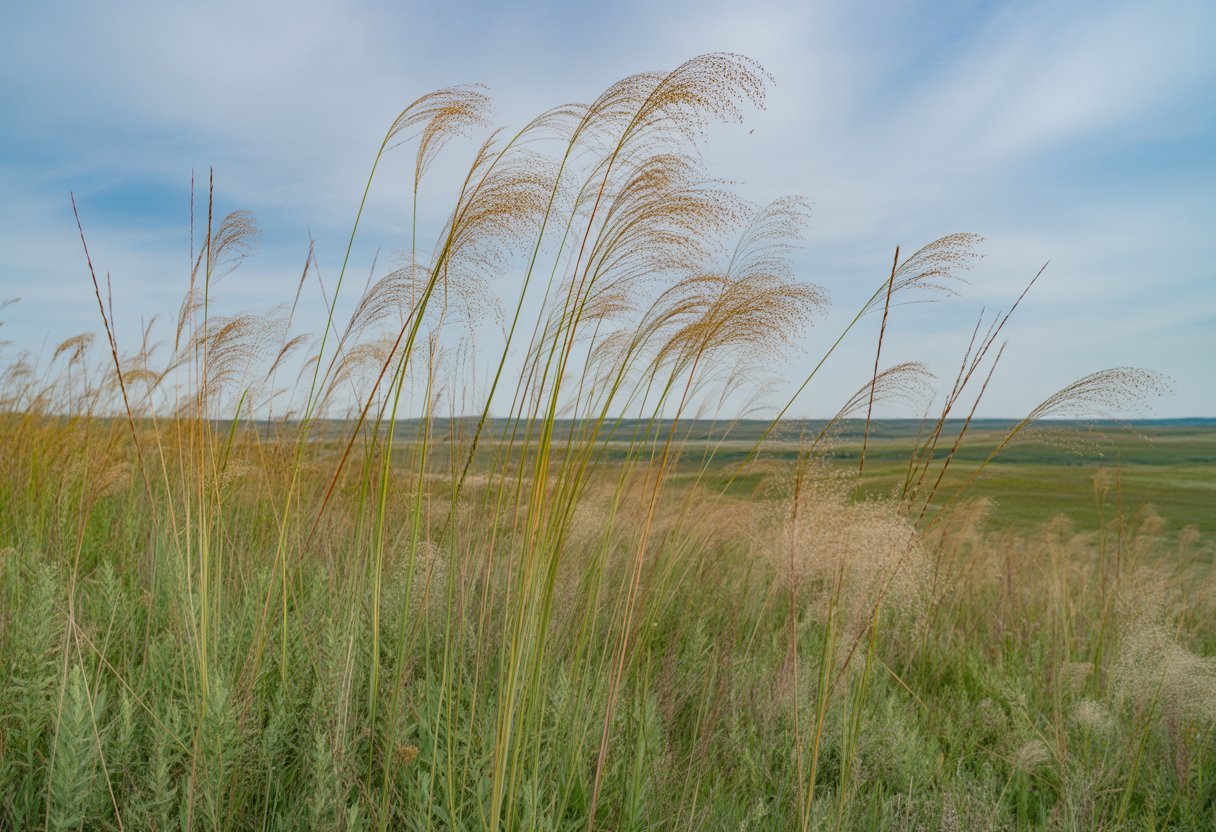
Native prairie dropseed adds biodiversity, controls erosion, and keeps things interesting year-round. Its features work for both wild prairie restoration and more managed landscapes in Nebraska.
Prairie Garden and Visual Interest
Prairie dropseed gives gardens a fine-textured look that holds up all season. The seed heads float above the foliage in late summer and fall, bringing a soft, airy vibe.
In autumn, the grass shifts to warm golden or reddish tones, which really pop against other prairie plants. Because it doesn’t need much water, it keeps prairie gardens low-maintenance.
Planting native dropseed helps recreate natural prairies and supports local wildlife. It likes the well-drained soils you find all over Nebraska.
Use in Roadside Revegetation and Ground Cover
Prairie dropseed does well on rough roadside sites, thanks to its tough roots. It holds soil in place and forms a thick ground cover that keeps slopes and bare spots from washing away.
Its drought tolerance and low need for nutrients make it a natural fit for roadsides. The grass even manages in compacted soils along highways, all without much fuss.
Roadside plantings with dropseed boost biodiversity by giving insects and small birds a place to live and feed. Maintenance drops off compared to non-native grasses, which is a relief for anyone managing those areas.
Cultivars and Selection for Nebraska Landscapes
A few cultivars of prairie dropseed have popped up, focusing on things like height, seed head density, or growth style. ‘Pierre’ and ‘Golden Sands’ are favorites in Nebraska.
‘Pierre’ stays compact and shows off rich fall color. ‘Golden Sands’ grows a bit taller, with bright yellow-green leaves that stand out in a mix.
Picking the right cultivar depends on your site and what you want out of the planting. Either way, these choices keep the drought tolerance and flexibility that make prairie dropseed so reliable for restoration or city projects.
Interactions with Fire, Wildlife, and Associated Species
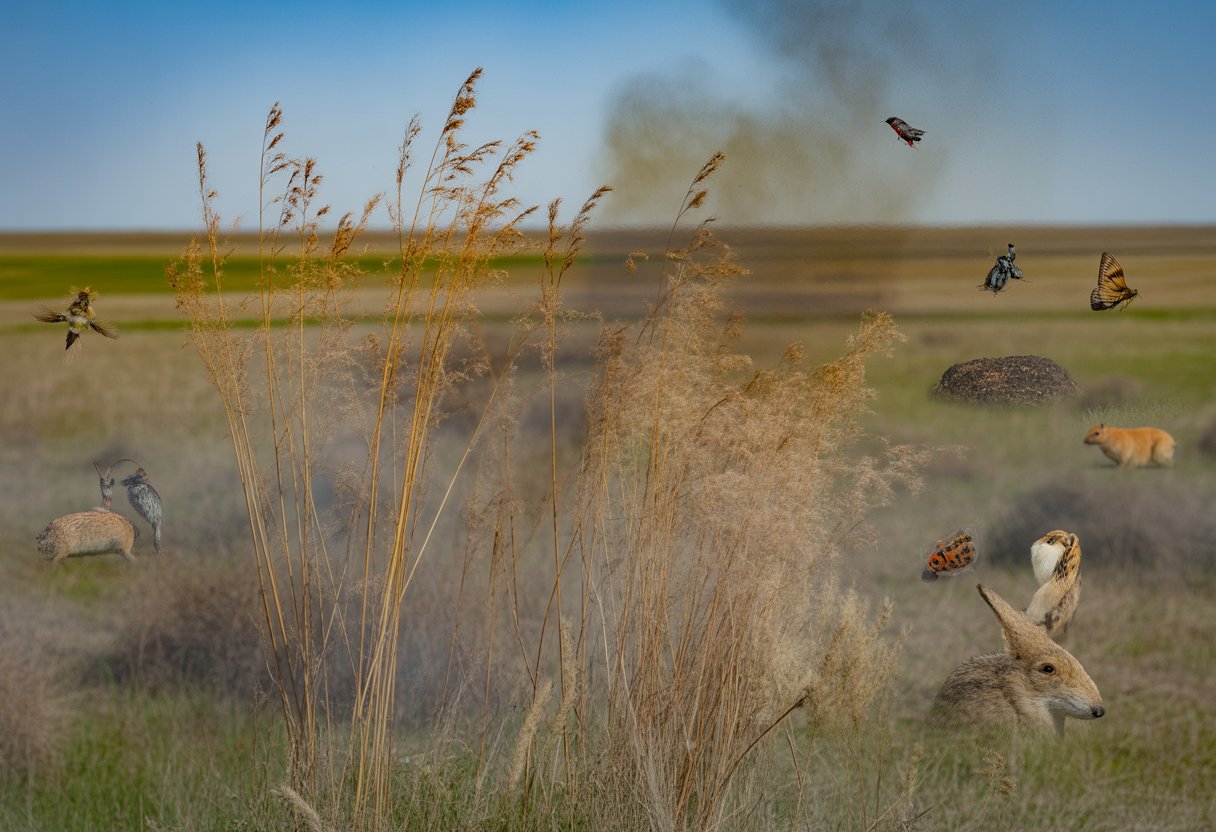
Native prairie dropseed fits right into Nebraska’s mixed prairies, dealing with fire, wildlife grazing, and other native species. Its reactions to fire and grazing shape how rangelands and savannas hold up over time.
Forage Value and Nutritional Benefits
Prairie dropseed offers moderate forage for wildlife and livestock, especially in pastures that aren’t overgrazed. Animals will eat it into late summer, but they tend to prefer other grasses like big bluestem or sideoats grama.
Early in the season, it packs a fair amount of protein and digestible fiber. Deer and upland game birds rely on it when other food gets scarce. After it sets seed, though, the quality drops, so timing matters for grazing.
Fire Management and Postfire Regeneration
Prairie dropseed bounces back well from seasonal prescribed burns, which are common in Nebraska’s rangelands. Fire triggers new shoots at the base and often thickens up the stand by knocking back invasive plants.
Regrowth usually starts within weeks, especially after moderate fires. In places managed with fire, like glades and barrens, burning helps prairie dropseed stay on top by keeping out woody plants.
If burns get too frequent or intense, though, the grass can thin out. Fire, when used right, helps prairie dropseed stick around alongside other perennials like little bluestem and sand dropseed (Sporobolus cryptandrus).
Associations with Other Native Grasses and Wildflowers
Native prairie dropseed often grows right alongside little bluestem, switchgrass, and buffalograss in well-drained moraines and mixed prairie areas. These grasses really help build up structural diversity and offer rangeland cover that wildlife seem to love.
You’ll find prairie dropseed mingling with wildflowers that thrive in open, sunny spots. This mix attracts a variety of pollinators, which is always a plus.
In savannas and pastures where grazing stays light, these graminoids hold together as stable plant communities. They put up a solid fight against invasive non-native species.
When prairie dropseed teams up with other perennial grasses like Indian grass and sand lovegrass, the result is better soil stability and healthier prairie ecosystems—especially out in Nebraska’s prairies and glades.

